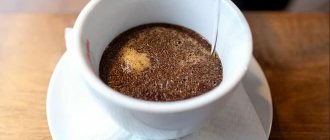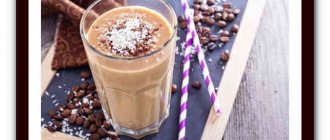A correctly selected coffee can prevents moisture from entering, evaporation of aromatic substances and changes in the properties of the product.
How should I store ground, bean and instant coffee after opening the package? Which utensils best preserve the primary aroma of roasted beans? What to choose - glass, ceramics, plastic or metal? In this manual, you will find answers to important questions and discover new market products that manufacturers have come up with for those who know a lot about elite varieties.
In this publication:
Basic material requirements
The coffee storage jar must be airtight. It is important that no foreign odors, air or moisture enter the container. A tight lid is the main condition for preserving the primary aroma and taste. The second important point is the material of the container.
Practical glass and its weaknesses
Glass coffee jars are sold in almost every supermarket; they are practical, convenient and well suited for storing whole or ground beans. Glass is inert, does not absorb odors, and after washing absolutely no aroma of the previous type remains. This is important for those who buy different varieties.
As a rule, glass jars have screw-on lids. This is also a plus, since screw caps are the most airtight. Lids with silicone seals are especially reliable; they do not let air and moisture in. There are similar containers for storing cereals and sugar, but they are larger.
A serious drawback of classic glass is its transparency , which does not protect the grains from the harmful effects of the sun. The jar should be stored in a dark closet. A modern alternative to glass is glass ceramics. It does not transmit light and is more durable.
Features of ceramics and clay
A ceramic jar is suitable for storing coffee, but give preference to containers with tight lids, complemented by silicone or rubber seals. Or lids with clips that tightly close the dishes. Decorative jars, closed only for beauty, are intended for short-term storage or green grains.
It is better to give preference to glazed ceramics . If there is no glaze, the pores will absorb the aroma of coffee oils. Over time, the oil tends to become bitter and change its smell. In addition, different varieties have their own notes, which are not always allowed to be mixed.
The outer side of ceramic dishes is often decorated with voluminous decor or painted. It is convenient when the jars have images or inscriptions that indicate what is inside, because the material is opaque.
Do not store coffee in clay containers . Clay is an amazing material. It absorbs moisture when there is a lot of it and releases it in dry air conditions. So in a couple of hours you can get a spoiled product even from the most expensive variety. And if the grains can still be saved by roasting, the ground and instant grains can only be thrown away.
Plastic and wood
Wooden containers are impractical because they allow air to pass through, absorb odors, and are not airtight. If you really like the design of wooden boxes, choose those that have a glass jar inside.
Cheap plastic containers are not suitable for coffee. They should only be considered for short-term storage of leftovers. But true connoisseurs never use plastic, even for instant coffee drinks.
Durable and capricious metal
It is better not to pour coffee into cheap tin cans. Even if there is a protective coating inside to prevent oxidation. The fact is that metals tend to quickly heat up and cool down, as a result of which moisture forms inside. Warm metal is also an enemy to roasted beans.
Stylish metal stainless steel coffee cans can be chosen if there are no temperature changes and steam in the storage location. Stainless steel retains grains well, but, as mentioned above, metals tend to heat up and cool quickly. And this negatively affects the quality of the product.
Sometimes stainless steel is combined with glass. In some cases, there is a glass bulb inside the steel body. Don't forget the importance of an airtight lid. In the case of metal containers, it is better to have a rubber seal .
Metal cans
True connoisseurs
Coffee ceremonies, who scrupulously evaluate the product and masterfully navigate the varieties, do not recommend buying coffee cans made of metal.
Tin, which is most often chosen by manufacturers, in conditions of high humidity and temperature changes, and these conditions are typical for the kitchen, can negatively affect the quality of coffee beans. Low-grade metal is prone to oxidation, which will ruin an expensive product in seconds.
Which form do you prefer?
Jars for storing coffee, tea and sugar are often sold in one set. They are cylindrical, square, and curly in shape. Coffee beans can be stored in almost any container; they do not stick to the walls and easily spill out without getting stuck in the recesses. Square containers do not take up much space; they can be placed several at a time.
For ground and instant coffee, round jars , since during storage the powder gets clogged into the corners. Leftovers should always be removed so that the stale product does not spoil the taste and aroma of just roasted beans.
The volume of the container depends on the type and norms of coffee consumption. For grain, you can buy a larger jar - with a capacity of a liter and a half. For ground, you need a small jar that can hold 100-150 g of powder.
As for the neck, it is more convenient when it is wide . Don’t forget that you will need to not only scoop the coffee with a spoon, but also pour it inside somehow.
On sale there are containers for sugar, tea and coffee on a stand with one lid. It's better not to buy this one. Coffee should be isolated from other products. In addition, sugar tends to absorb moisture. Such a neighborhood is extremely undesirable.
Brands and cost
The price of one can of hot coffee depends on the recipe of the drink and its volume. The leader in the production of hot canned drinks is. The brand has 2 product lines.
Let's Be
The drink is in great demand in South Korea - its popularity is growing every year. Coffee in cans came to the Russian market recently, but I immediately fell in love with it. To prepare Let's Be, elite Colombian varieties are used. The milky-creamy flavor of the drink comes from whole milk. Let's Be hot coffee is available in 175 and 235 ml containers. The drink comes in aluminum bottles with screw caps. Selected Arabica beans are regularly supplied to production. They are recognized worldwide as a premium product.
Why do you need a valve on the lid?
Freshly roasted coffee beans release carbon dioxide, which must escape to prevent moisture build-up and oxidation. Please note that packs of coffee beans from well-known and status brands are always equipped with a valve. The valve device allows gases to escape , but does not let air in.
The same principle applies to a coffee storage jar with a valve. Excess gases escape through a valve located in the lid. But no foreign odors penetrate inside. The aroma also does not evaporate, because the holes are too small and open only under the pressure of gases, which are formed only in the first hours after roasting.
A jar with a valve is good for storing roasted beans and ground coffee. But don’t forget that gourmets don’t store ground at all. Coffee beans are ground immediately before preparation.
It makes no sense to pay extra for a container with a valve if you buy roasted coffee in packs. All gases have already left the warehouse. A tight lid is sufficient. The valve is useful for those who roast themselves or buy beans where they roast individually for customers.
Decoupage - the choice of needlewomen
If you have never heard of decoupage
, simple decor of a glass jar is the best option for trying yourself in a
new hobby !
For the debut, use the simplest container, which you won’t mind throwing away if the “first pancake” is unsuccessful. First of all, wash the container well and degrease the work surface. Paint dry walls evenly with white acrylic paint and leave to dry. In the meantime, pick out some pretty three-ply napkins for decoration. chocolate brown tones look beautiful
.
Carefully cut out the fragments and separate the painted layer from the rest. Attach the picture to the jar and apply PVA glue on top, working carefully with a brush so as not to damage or wrinkle the picture. After the glue has completely dried, the result is coated with acrylic varnish to give the craft practicality and water resistance.
Decoupage of cans for coffee and tea can be done using the principle of reverse decoupage, in this way you get a beautiful design not only on the outside, but also on the inside. To do this, the pictures are pasted with the front side inward. Then the front sides are painted and decorated. These jars look very impressive
even empty! If you love everything new, be sure to join our WESTWING club! We have many more useful tips and special discounts for subscribers!
Smart new product: vacuum jar
It is known that in a vacuum environment, products last longer, because there is no access to oxygen, the main oxidizing agent. But to create a vacuum in a vessel that is often opened and closed, a mechanism is needed that removes air after each closing of the lid.
The simplest containers are equipped with a pump for manually pumping air through a valve in the lid. A new product on the market is a battery-powered vacuum coffee can. Having poured the required portion of grains, you need to press the button - the air will be automatically pumped out.
Any can of coffee must be kept in a dry and dark place, protected from sunlight. Temperature changes and high humidity should not be allowed. A kitchen where there is a lot of cooking is not the best place. Try to at least exclude cabinets near the stove and oven. And don't stock up.
In online stores you can buy a jar for storing coffee for every taste. This is a good gift for friends and colleagues. If you don’t want to buy, make a beautiful container with your own hands from unnecessary dishes or empty containers.
What is coffee in a can
Hot coffee in a can is a completely ready-to-drink product. It tastes no different from a drink you make yourself in the kitchen. It is produced in factory workshops where multi-stage control over the quality of the product is carried out. The coffee is vacuum rolled, so the product has a shelf life of more than 1 year.
Coffee is brewed only from natural ingredients, without adding preservatives.
The purest water for coffee is delivered from wells up to 190 meters deep. The drink is produced at a factory with 30 years of experience in the manufacture of coffee and other products. Hot coffee in a can has the following advantages:
- High quality product, right from water to packaging. Sophisticated purification technology and fresh ingredients.
- The final product does not contain genetically modified components. All components are only of natural origin.
- Ease of moving with the product. Spontaneous spillage of liquid is excluded, with the exception of physical impact on the packaging.
- Can be used at any time of the day.
- You can drink coffee hot or cold. The cooled drink has the same taste.
- Save time, no need to wait in line at the coffee shop or at the machine.
These qualities in the new product have become decisive in the choice of a modern busy person.
Choosing a suitable location
When the issue with the coffee storage mode is resolved and the housewife decides to keep it in a glass jar, it is necessary to choose the most suitable place to store the beans. When deciding where to store your coffee beans, you need to take the humidity level into account. Since water is boiled and food is prepared in the kitchen every day, any containers for storing coffee beans or ground coffee should not be placed in close proximity to the gas stove.
Where is the best place to store coffee? A suitable option is a shelf in a kitchen cabinet located at a distance of at least 6 meters from various heating appliances and a gas stove. You need to store coffee away from the windowsill and sink.
Can coffee be stored in the refrigerator in packaging or in a container? Experts suggest the option of storing coffee in the refrigerator, but it is associated with certain difficulties. Constantly slamming its doors causes condensation to form on the surface of the grains. Raw materials should be carefully packed in a container with a lid or a vacuum bag.
Containers for storing coffee beans placed on a shelf must be completely closed. The refrigerator contains a large variety of foods with a strong aroma, which is easily absorbed by the fragrant grains.
It is also possible to keep coffee in the freezer, but in such situations it is important to comply with several requirements:
- coffee beans in the freezer should be kept in an airtight container made of dark, opaque material;
- An open package of beans must not be placed in the freezer; coffee should only be stored in the refrigerator in a sealed container;
- After opening the package, ground coffee or beans must be divided into several portions and defrosted one at a time before preparation.
For coffee of any kind, repeated freezing is not recommended; to preserve the taste and aroma of the drink, the raw materials must be thawed only before brewing.
Storing coffee beans, as well as storing ground coffee in the freezer, is only allowed for a drink that will not be consumed every day. This place is only suitable for long-term storage of raw materials.
How to store ground grains
To store ground coffee at home, it is preferable to choose special vacuum or sealed bags, because after grinding the beans to a powder-like state, their susceptibility to other products increases. But such packages are not available in every home. If they are not available, it is recommended to store ground coffee in the original packaging in which it is sold.
Green coffee beans
Green coffee beans have the longest shelf life. If you need to preserve beans for a long time, it is recommended to keep them unroasted. Storing green coffee is not accompanied by a deterioration in quality and taste.
Where is it best to store raw coffee beans - in a dark and cool place, in a sealed jar or plastic container, in conditions of minimal humidity. The shelf life of green coffee is at least 12 months.










